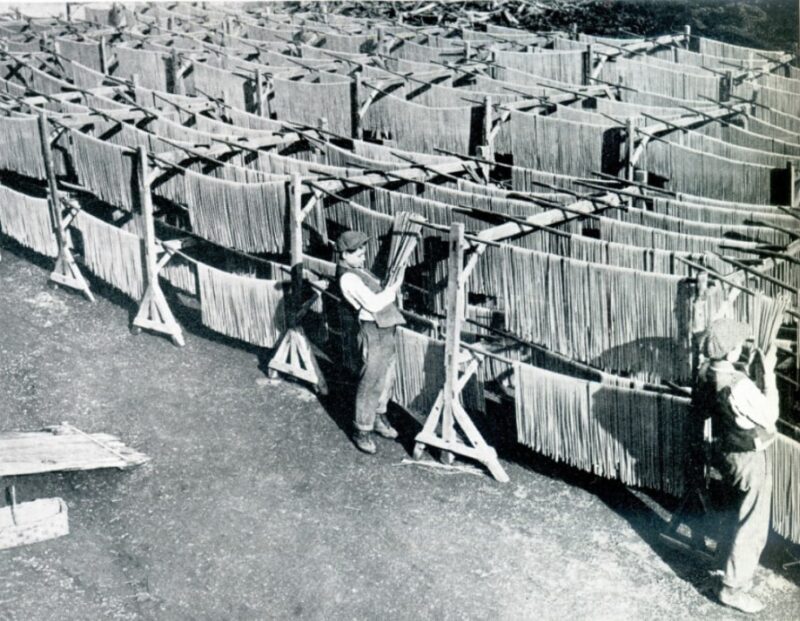- Article
- 5,096Views
History of Pasta: From China to Italy
November 23, 2021
Reporting from, KOMPAS.com – Pasta is known as a food that comes from Italy. Types of pasta that are populer in indonesia are spaghetti, lasagana, macroni, penne, and other types. According to The Daily Meal, pasta is defined as a food a made from a mixture of semonila or durum wheat, water, and eggs. The mixture is kneaded and made into various shapes and sizes. Pasta, in addition to being cooked fresh, can also be dried to keep it durable and practical.
Currently, pasta is a worldwide food and can be created with various spices and food ingredients.

History of Pasta
The ethnic roots of pasta have a long been debated and many theories have been put forward. The most famous myth, pasta was brought to Italy from China by Marcopolo, an explorer in the 13th century. Launching National Geographic, this myth arose from the interpretation of the travel story Polo’s Travels. In that story, Polo mentions that pasta comes from a tree that is now considered a sago tree. This tree produces flour, so it is believed the pasta was made from this tree.
The food produced from this tree gave rise to the thought of Venetian travelers that pasta came from his country. Even when Polo left on his travels in the 1270s, there is a reference to soldier in the northern Italian city of Genoa, who had a basket of “macaroni”. A century earlier, the Muslim geographer Al-Idrisi wrote that he saw pasta being produced in Sicily. Until now the origin of pasta is still debated.
Reporting from sahabatnestle.co.id, pasta cannot be separated from Italy. This one food was indeed the first time it was popular in the country which is also the birthplace of this pizza. More than 400 years ago, this noodle-like food was born. Now it’s not only in Italy, you can easily find pasta with various types in all corners of the world, including Indonesia.

The word ‘pasta’ comes from the Italian word ‘Pasta Alimentare’. The word has the meaning of food dough like pastry dough, cake dough, and dry dough. This understanding is different if it is interpreted based on chronology of the emergence of pasta. According to historical literature, pasta was first born in China. Chinese history has known noodles for much longer, long before there was pasta in Italy.
The Chinese claim that noodles, which have been a staple of Chinese culture for a long time, are the forerunner of the emergence of pasta, which is known to the public as one of the icons of Italian cuisine. However, it is true as it is. History has proven that in 1295 Marco Polo brought souvenirs when he returned from his exploration of the land of China.
Investigation proved that Marco Polo brought a souvenir in the form of the noodles from China. At first he took it with him, but after a while many Italians liked him. They are are trying to make it. In the end, these noodles developed very rapidly and changed according to the creations of Italian cooks. Furthermore, the noodles they make from dough are called pasta.
In Indonesian itself, pasta was brought by the Dutch nobels during the colonial era. For the original dough, the pasta is made from semolina flour, a type of endosperm grain or inner layer of a grain of the Durum variety. This flour is mixed with eggs and water to form a dough. Durum wheat is the only type of wheat is the only type of wheat is the only type of wheat is the that can be used as a raw material for pasta. The high content of protein and gluten makes pasta dough more supple and elastic

Pastries of Old Pasta
Reporting from, KOMPAS.com – the first pasta was told by writer named Boccaccio in his fairy tale book, The Decameron. The book was published in the 14th century. He tells he tantalizing fantasy of macaroni and ravioli pasta topped with a mountain of parmesan cheese by the pasta chef. Franco Sacchetti, poet and other fairy tale writer, also recounts how two friends met for macaroons in the 1390s. They both ate from the same dish, but one of them had more appetite than the other. Throughout the Middle Ages to the early 16th century, pasta dishes were very different from those eaten today.
Pasta is not only cooked longer, but also mixed with a mixture of sweet, savory and spicy ingredients. Pasta was considered a dish for the rich proudly placed in aristocratic banquets during the Renaissance era. For example, Bartolomeo Scappi, a papal (Catholic Institution) chef of the mid-16th century, created a third dish for a banquet with an elaborate recipe. The dish consists of boiled pork belly, beef udder, roast pork, parmesan cheese, sugar herbs, spices and raisins. There are many other complicated pasta recipes that appeared in the Renaissance era. It’s a different story with pasta, which is considered a practical food in this century.
Food of Commoners and Kings
Reporting from KOMPAS.com – Pasta, at the end of the 17th century in Naples, became the main staple food for the general public. Naples became known as leaf eaters (mangiafoglia) in the 1500s. In the 1700s they started to like eating macaroni. These dietary changes stemmed from the declining standard of living of the common people, which significantly limited their access to meat. At the same time wheat is sold at a relatively cheap price.
Restrictions on eating for religious reasons also have an effect on changes in eating patterns. Pasta was then considered the ideal food for days when it was forbidden to eat meat. Since then, pasta has been synonymous with the daily diet of the common people. However, pasta is able to conquer high-end taste like King Ferdinand IV of Naples who is said to have devoured macaroni voraciously. Since its inception until now, pasta changed. Some of things that have changed drastically over time are the flavors added to pasta.
Sweetness has been replaced by savory, sugar swapped for vegetables, which helps make pasta a nutritionally complete dish. At the beginning of the 19th century, tomatoes were added. The Italians had considered the dish of tomato paste as an exotic food. In fact, it wasn’t until 1844 that the most common pasta recipe emerged: spaghetti with tomato sauce.



